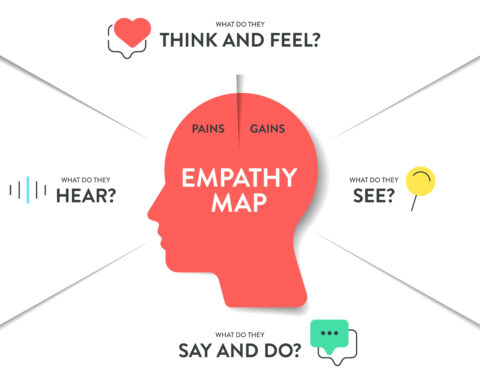Table of Contents:
What is Augmented Reality?
Augmented Reality is a new technology and one of the fastest developing. Every year advances are being made in this field. The term Augmented Reality, or AR for short, refers to those solutions that combine the real world that we see every day with a 3D or 2D computer-generated one. This digital information is often stored on an external server, so AR units are usually connected to the Internet.
Augmented Reality solutions use Internet connections to link to servers that store the necessary information to generate the required images, provide data to the end-user, and communicate between AR units.
Augmented Reality brings together IT solutions and telecommunications to control information flows and streamline various processes. With Augmented Reality solutions, any object the user sees can be enhanced with additional information displayed alongside it. AR also provides a new interface for user communication with IT systems.
Unlock the future with Mazer: Your innovation partner.
Augmented Reality in logistics – how can it be used?
-
Applications of AR in warehousing
AR is now considered to be a very promising technology for warehouse logistics. After all, warehousing costs account for as much as 20% of logistics overheads, while the cost of picking products is 55% to 65% of warehousing costs. Augmented Reality has the potential to reduce these costs by improving the picking process significantly. In addition, AR can help companies to train new and temporary employees and manage their warehouses more efficiently.
-
Picking products from the warehouse using AR
In logistics, the most tangible Augmented Reality solutions are systems that optimize the product picking process. The vast majority of warehouses still use paper lists for product retrieval. Unfortunately, any paper-based approach is slow and prone to errors. Moreover, temporary employees often pick products, which requires expensive training to ensure an efficient handling process.
Systems from companies such as Knapp, SAP, and Ubimax are currently in the late stages of practical testing of portable AR systems such as head-mounted displays, cameras, a portable computer, and batteries that can provide power for at least one shift. This AR software offers real-time object recognition, barcode reading, in-store navigation, and seamless information integration with the Warehouse Management System. One vital benefit of this AR application is the provision of hands-free, intuitive digital support for employees during manual product picking. Using such a system, each employee has a digital list of the products within their view and, thanks to the internal navigation capability, sees the best route to them, reducing their walking time through efficient planning.
-
Optimizing transportation with AR
In recent years, the use of advanced technologies in logistics has dramatically improved the efficiency, reliability, and safety of cargo transportation. AR has the potential to further optimize this in areas such as completeness checking, international trade, on-road navigation, and freight loading.
For example, with AR, loads can be picked up more efficiently. This is because an AR-equipped picker can quickly look at a load to determine if it is complete. Without such support, manual counting and time-consuming barcode scanning with a handheld scanner are needed. Instead, AR equipment can use a combination of scanners and 3D sensors to determine the number of pallets or individual shipments by scanning the unique markers on each shipment.
-
The evolution of international logistics through Augmented Reality
Augmented Reality can also prove very helpful for global trade service providers. This is because, before shipping, an AR system can help ensure that shipments comply with the relevant import and export regulations and that the trade documentation has been completed correctly. For example, an AR device could scan trade documents and goods for keywords, automatically suggest changes, and make corrections to commodity code classifications.
-
Route optimization using AR
With the development of Augmented Reality technology in logistics, we will also see an increase in dynamic traffic assistance using real-time data to optimize routes and indicate alternatives. AR applications for drivers (using either goggles or windshields) can be used to display real-time information in the driver’s field of vision. As a result, AR systems could soon replace today’s navigation systems, with the primary advantage being that the driver will not have to take their eyes off the road. AR systems can also provide the driver with vehicle and cargo information.
Logistics is an industry where new technologies are rapidly being adopted, and AR is one of the most promising. Augmented Reality can significantly increase the comfort of work and improve the implementation of daily tasks. Ultimately, this translates into lower operating costs and stable development for companies. Therefore, it is worth implementing AR solutions in logistics to stay one step ahead of the competition.
Read also: How Augmented Reality Can Support Industry 4.0
How does Augmented Reality benefit logistics?
Augmented Reality proves promising in warehouse logistics by optimizing the product picking process, reducing costs, and enhancing efficiency. AR systems, such as those by Knapp, SAP, and Ubimax, utilize portable devices for real-time object recognition, barcode reading, and in-store navigation.
How does AR optimize transportation in logistics?
AR enhances transportation efficiency in logistics by facilitating tasks like completeness checking, international trade compliance, on-road navigation, and freight loading.
How can AR be utilized for route optimization in logistics?
AR contributes to route optimization by providing real-time data for dynamic traffic assistance. AR systems also offer drivers vehicle and cargo information, improving overall logistics efficiency.
Unlock the future with Mazer: Your innovation partner.








